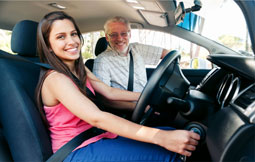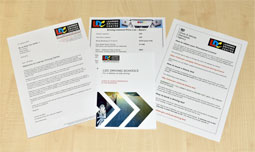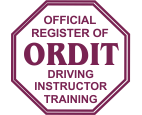28 Eco Safe Driving
 Eco-safe driving is a style of driving that will help to reduce damage to our planet and the air we breathe whilst improving road safety. Transport currently accounts for 20% of all air pollution emissions in the world. Eco-safe driving is not about driving at lower speeds (although this would undoubtedly help to reduce fuel consumption and accidents) it is more about avoiding senseless wastage of fuel through unnecessary acceleration or braking, inefficient use of the gears and speeding (i.e. exceeding permitted limits or driving at speeds unsafe for the prevailing conditions). The skills required for hazard perception, defensive driving and progressive driving play a big part in Eco-safe driving as they will help you to avoid inefficient use of the accelerator, brake and gears through better awareness, anticipation and planning.
Eco-safe driving is a style of driving that will help to reduce damage to our planet and the air we breathe whilst improving road safety. Transport currently accounts for 20% of all air pollution emissions in the world. Eco-safe driving is not about driving at lower speeds (although this would undoubtedly help to reduce fuel consumption and accidents) it is more about avoiding senseless wastage of fuel through unnecessary acceleration or braking, inefficient use of the gears and speeding (i.e. exceeding permitted limits or driving at speeds unsafe for the prevailing conditions). The skills required for hazard perception, defensive driving and progressive driving play a big part in Eco-safe driving as they will help you to avoid inefficient use of the accelerator, brake and gears through better awareness, anticipation and planning.
What the examiner is looking for
Control
- Minimisation of harsh or rapid acceleration. Whenever it is safe to do so, gradually increase speed by gently depressing the accelerator.
- Engagement of higher gears as soon as possible without labouring the engine. Avoid engaging unnecessary intermediate gear changes so that you can more quickly engage higher gears or delay engaging lower gears. Modern cars are designed to deliver power even when engine revs are quite low and provided you haven't lost momentum as you slow down you will be surprised how late you can leave a downward gear change without risking an engine stall.
Planning
- Minimisation of harsh braking or unnecessary stopping. Look well ahead and if you see that you will need to reduce speed, do it gradually using engine braking rather than applying the brake at the last minute. Gradually adjust your speed to time your arrival at meet situations or when turning right such that you can potentially maintain progress and avoid having to stop. Similarly, you can do this when emerging from a give way junction provided you have a good view of the road you intend to emerge into as you approach the junction.
- Look well ahead to see what is happening, to ensure that any acceleration now will not be wasted a little later on because you have to brake. Let gravity aid you so that if you are going down hill you may find you can fully release pressure on the accelerator and still maintain a safe speed.
Driving faults recorded
28 Eco Safe Driving
The examiner will record any of the faults below but they will not take into account when deciding whether or not you should pass. However, the examiner will advise you of these faults and offer you a copy of the Eco-safe driving leaflet.
Control
- Rev-up the engine whilst waiting to move off.
- Use excessive acceleration to move off at speed as if competing in a race.
- Peak the revs in each gear to obtain maximum acceleration.
- Remain in lower gear unnecessarily
- Change down into lower gear unnecessarily
Planning
- Tailgate vehicles resulting in continual harsh braking and acceleration.
- Wait until the last minute to react to hazards including junctions ahead by braking harshly.
- Rush to overtake at each and every opportunity even on congested roads where little benefit will be gained.
- Miss good opportunities to use selective gear changing.
- Miss good opportunities to use slight speed adjustments to maintain progress rather than having to stop.











